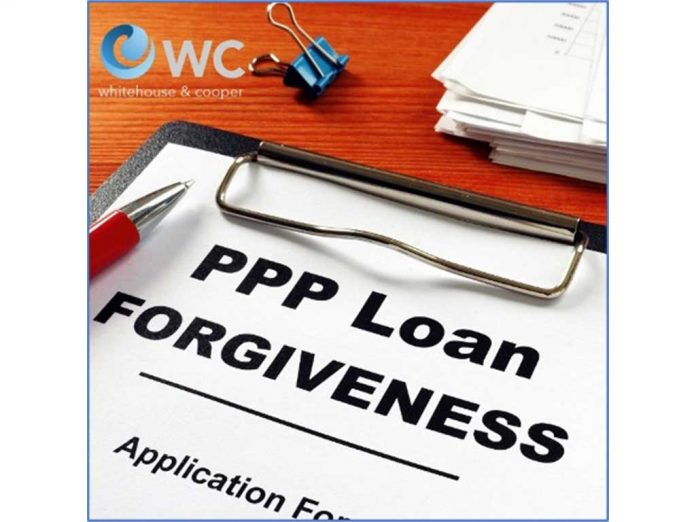Written by Daniel D. Whitehouse, Esq.
In boxing, they say it’s the punch you don’t see coming that knocks you out. Let’s face it, 2020 has kept the punches coming, and if you own a business, chances are you have felt knocked out more than once these past few months. Business leaders have had to make tough decisions when considering downsizing or eliminating staff, taking financial losses, or temporarily—or worse—permanently closing their doors. Many businesses able to remain open adapted their business models almost overnight to fit the needs of the current times. Other business owners are taking this time to improve areas of their business they may have put on the back burner due to prior time constraints. Falling and getting back up is what brings success, time and time again. For some businesses, the Paycheck Protection Program (PPP) was the remedy they needed to go another round. But will applying for PPP for forgiveness lead to a TKO in favor or against the business owner?
PPP Quickly Explained
If you are a business owner, hopefully, you have been able to stay on your feet with the assistance of the PPP put in place by the Small Business Administration (SBA), established by section 1102 of the Coronavirus Aid, Relief, and Economic Security Act (CARES Act or the Act). PPP was released early April (albeit, off to very a bumpy roll-out) and is a loan designed to provide a direct incentive for small businesses to keep their workers on the payroll. SBA will forgive loans if all employees are kept on the payroll for eight weeks* and the money is used for payroll, rent, mortgage interest, or utilities (*more on this below). You can apply through any existing SBA 7(a) lender or through any federally insured depository institution, federally insured credit union, and Farm Credit System institution that is participating.
PPP Loan Forgiveness Application
On May 15, 2020, the SBA released the PPP Loan Forgiveness Application. The application includes many borrower-favorable rules and should increase the forgiveness amount for most borrowers. This application has the following components:
- the PPP Loan Forgiveness Calculation Form;
- PPP Schedule A;
- the PPP Schedule A Worksheet; and
- the (optional) PPP Borrower Demographic Information Form.
- All Borrowers must submit (1) and (2) to their Lender.
It defined the following costs eligible for loan forgiveness:
- Payroll costs (up to $100K cash compensation/year/employee)
- Interest on mortgage obligation on real or personal property incurred before 2/15/2020
- Rent under a lease for real or personal property in force before 2/15/2020
- Utilities for which service began before 2/15/2020 (e.g., gas, utilities, water, electric, transportation, telephone, and internet)
On May 22, the Treasury Department issued the “Interim Final Rules” on PPP loans. These new regulations provided more complicated and harsher requirements for small business owners to apply for and receive PPP loan forgiveness.
On May 27, 2020, the House passed the Paycheck Protection Program Flexibility Act, which eases certain restrictions on small businesses as they seek loan forgiveness under the PPP. The Flexibility Act addresses many of the concerns expressed by small businesses. First and foremost, it reduces the amount of the loan needed to be spent on payroll from 75% to 60%, thus increasing the amount of funds available for other expenses from 25% to 40%. These expenses still include rent, mortgage payments, utilities, and interest on loans.
The plan outlined in the Flexibility Act would also offer the following:
- Extend the window businesses must use the funds from eight weeks to 24 weeks
- Push back a June 30 deadline to rehire workers to December 31, 2020
- Provide more leeway on loan forgiveness for business owners who show they could not rehire workers or reopen due to safety standards
- Extend the time recipients have to repay the loan
- Doubled the minimum term period for the loans to five years from two years and allows companies whose loans are forgiven to delay payment of payroll taxes.
On the evening of June 3, 2020, The Senate adopted the Paycheck Protection Program Flexibility Act, which is being reported as having the same text. The bill now goes to the President for approval before it takes effect.
While this is good news for business owners, the above illustrates how our current reality is evolving every day, bringing more challenges with it. For now, all PPP loan recipients wait to see which set of requirements will ultimately be binding when it comes time to request loan forgiveness.
If navigating the PPP Loan Forgiveness Application process is adding an extra level of pandemonium into your life, reaching out and asking a professional for guidance is recommended. We hope you and your loved ones are weathering the COVID-19 storm of uncertainty as best, and as safely, as you can. And remember, keep rolling with the punches.
ABOUT DANIEL D. WHITEHOUSE, ESQ.
WHITEHOUSE & COOPER, PLLC
Daniel D. Whitehouse entered the legal profession with more than a decade of experience in the information technology (IT) industry and managed the IT infrastructures of some of the world’s largest companies. Mr. Whitehouse brings his unique blend of technology, law, and business experience to his clients of his firm, Whitehouse & Cooper. He is a member of The Florida Bar, the Orange County Bar Association, and the Lake County Bar Association. He participates in numerous sections and committees within these associations and serves on the OCBA Technology Committee and is past chair. He is admitted to practice in all Florida state courts and the Middle District of Florida. He is available for speaking presentations adaptable to seminars, virtual seminars, college classes, webinars, panel discussions or podcasts. Visit his website for more information at https://www.whitehouse-cooper.com/.






